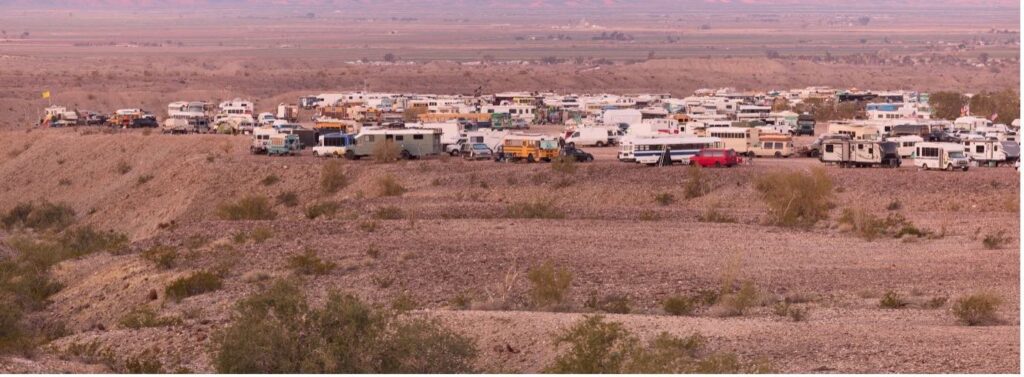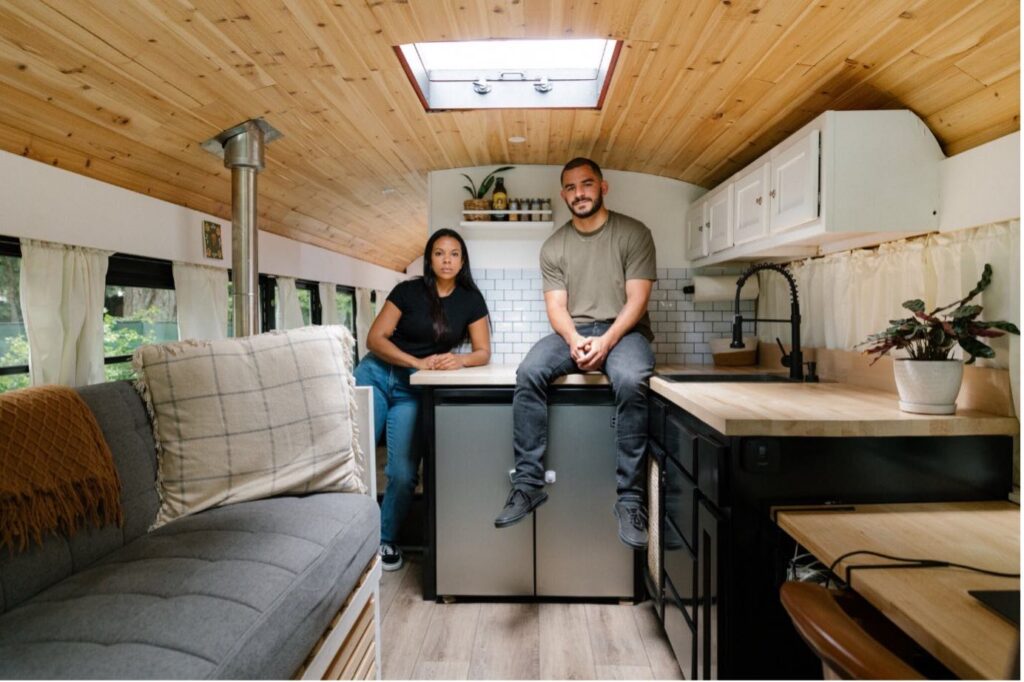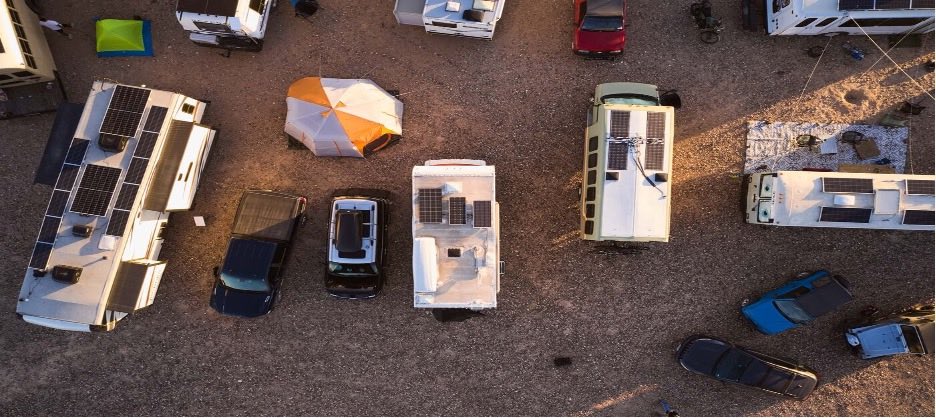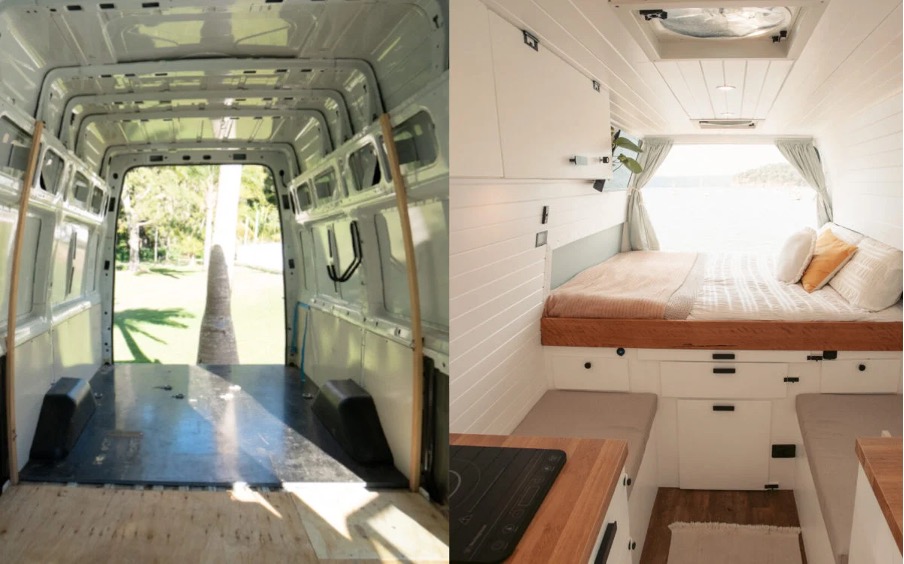Were you bombarded by bohemian-looking content creators showing off their latest adventure on the road living in a ‘van-house’, some people bringing along even their kids and pets too? Van life is the recent buzzword on social media platforms like Instagram and YouTube, this social media phenomenon is especially popular in the whole ‘A Day In The Life’ format shorts or reels as the crisp concise videos popular on Instagram and YouTube. Alternative lifestyles like these have garnered massive popularity in recent times. The rising prices of properties and the obscene cost of living which have lowered the standard of life for people all over the world might be the culprit here.

No doubt ‘Van Life’ is a welcome daydream for people. It provides an opportunity to get out of dead-end living conditions and also offers an opportunity to travel at a cheap price, and seemingly more freedom. But is it really as good as it looks? Undoubtedly more and more people are choosing to try their luck with a life on the road, as it will be clear if you were to click on the #vanlife on Instagram and get more than 12 million results. This astonishing number is proof of the changing living preferences of a solid percentage of people facing up silently to the high housing costs in different countries.
Why are people choosing the ‘Van Life’
Living off the grid, on the road, chasing adventure and Instagram-able snapshots seems like the ultimate millennial spin on the American Dream. Try scrolling past a few reels on Instagram without coming across stories of attractive white couples posing in a meadow or a golden beach. Van life is irresistibly attractive and there is a valid reason as to why this trend had taken over the internet in the last few years. This social media movement has become a way of life whose origin can be traced back to even the hippie movement. With the rise of outdoorsy content on popular social media platforms like Instagram and TikTok, for people holed up in tiny apartments living paycheck to paycheck, the Van Life trend is a form of escapism. Although the criticism of this popular Instagram-worthy trend is rising, for the practitioners there are many noble and valid reasons for shunning traditional living arrangements.

Combating Climate Change
Climate Nomads as they are called, are the millennial, white, upper-middle-class, eco-conscious, university-educated population and are the major members of the Van Life social media movement. According to the preachers of Van Life, living in a traditional house is considerably more wasteful than the minimalist austere lifestyles necessary for survival living in a vehicle. Nowadays Vans and Campers function through solar panels installed on the roof and living in a vehicle makes people more aware of resource consumption and forces people to get rid of unnecessary wasteful luxuries. Even with the rise of solar-powered Camper Vans, this trend can hardly claim to be a solution to climate change. No doubt the principle behind Van Life might have started out with the aim of sustainable living, but the rise of luxury vans and RVs with high-end utilities can hardly be called a sustainable lifestyle, even without taking into account the amount of gas used to maintain even a simple existence inside a vehicle.
Economic Hardship and Rising Housing Rates
The rise in Van Life, or simply living inside a vehicle as a way of life, significantly rose after the 2008 economic crisis when a large number of people lost their ability to afford decent living conditions in huge metropolitan cities around the world. People were forced to let go of their houses due to not being able to afford mortgages and the massive number of people who lost their jobs had nowhere to turn to so they made do living in their vehicles, depending on public bathrooms and free camping sites or parking in local restaurants or local departmental store parking places. Some even after recovering their financial ability significantly didn’t go back to the traditional housing system, as a rebellion against modern capitalism. A major percentage of people further gave up on their stifling 9 to 5 jobs and sold their houses to travel the country on a budget.
Off Beat Adventurous Lifestyle
Van Life has a specific demographic, it is most popular among white millennials with well-paying corporate jobs. But the grind of 9 to 5 is not something the average millennial aspires to anymore. Some of the trendiest social media influencers are taking to the road and repopularising road trips, exploring the great outdoors, and are more interested in reconnecting with nature than getting ahead in the corporate rat race. As Van Life is growing in popularity, people are moving to homes on wheels with their whole families, even along with their children and pets. The rising popularity of homeschooling is also interlinked with this new way of life. Millennial parents believe nature to be a better educator than the traditional modern education system.

Origin of Van Life
Although traveling in a minivan or a camper with a mattress thrown in the back can be called the quintessential coming-of-age experience of the American youth since the hippie movement, #VanLife was first used by photographer Foster Huntington who left his well-paying job as a designer for Ralph Lauren to live a life on the road. It is then when Instagram was still in its infancy that he used the hashtag first, which took off and now is the name of a whole social media phenomenon. He has gone on to write a few popular books on his unique lifestyle as a Vanlifer.
Although its popularity is skyrocketing, Van Life is showcased in social media and the reality of it is quite contrasting. What is represented as an idyllic dreamy lifestyle is actually a mentally and physically exhausting way of life. A Vanlifer has to deal with the not-so-glamorous facts of living in a cramped vehicle, such as lack of privacy, fewer and fewer parking places where overnight parking is permitted, growing prices of gas, dealing with toilet waste, inaccessibility of water, and many more difficulties that the social media influencers fail to show in their posts. Living in a van is no joke, as many find out to their dismay after attempting to live off the grid inspired by social media influencers, without doing proper research.

Brands such as the California-based company GoWesty are capitalizing on this popular trend and are jumping on the Van Life bandwagon. Veterans who have lived on their moving home for years are concerned the hype around van life on social media has quite apparent real-life consequences. Free camping sites and other overnight parking options are slowly being inaccessible to them as people are overstaying their welcome and are not using overnight parking spots responsibly. More and more local governments and businesses are banning overnight parking, and people who have nowhere to turn to except their vehicles are bearing the blow.
The realities of living a life in the van are hitting people who are just in it for the fad, and a decline in the phenomenon can be seen. But despite this, the growing number of influencers who have accepted the Van Life as a way of life are turning it into a form of content as an easy way of gaining a massive following on Instagram. It is yet to be seen if the enduring tradition of life on the road recovers from the commercialized phenomenon of the Van Life social media movement.
Written by – Sangeeta Behera
Edited by – Nandini Pillai
